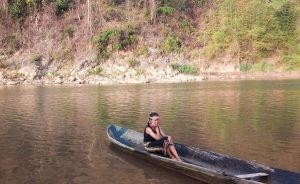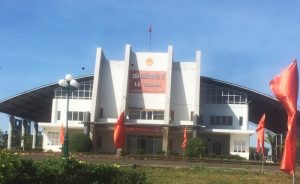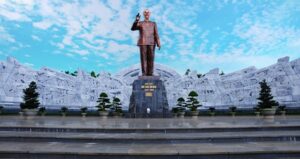Buon Ma Thuot, the city of Dak Lak Province, is located in the Central Highlands of Vietnam. Buon Ma Thuot gets an average height from 400m to 800m above sea level. Around the city, there are huge jungle forests with a lot of potential to develop ecotourism.
How is Buon Me Thuot City, Dak Lak Province?

Buon Me Thuot is about 377 km2, one of 14 first-class cities in Vietnam. In the Ede language, Buon Ma Thuot means the village of the Father of Thuot. It comes from the name of A-Ma Thuot (A-Ma is a father; Thuot is the name of the son). When Ede people have a son, they call the father the name of his son. A-Ma Thuot is the richest and most powerful person in the region.
Dak Lak Province is the home of many many minority groups living here. When traveling to Buon Ma Thuot City, you will have a chance to explore colorful and different cultures and visit other interesting tourist sites: Thuy Tien waterfall, the romantic Lake Lak, Jok Don National Park, Jun Village, Bao Dai’s Former Villa, and the others.
The mountainous landscape of Dak Lak

Dak Lak Landscape- photo: @tuan star
The landscape of Dak Lak is diverse, with high mountains, low plains, and plateaus. The highlands are concentrated in the south and southeast, accounting for 35% of the province’s natural area. This area has the highest mountain Chu Yang Sin with 2,405 m high.
The west and the end of the Truong Son range are a large plateau, quite flat with many lowland plains along the main river. The Buon Me Thuot plateau and surrounding area occupy 53.5% of the natural area.
The lowland terrain accounts for 12% of the natural area, concentrated in the districts of Krong Ana, Krong No, Lak, and Ea Sup Plateau.
Srepok is the largest river in Dak Lak Province

Dak Lak Province has a rather dense network of rivers and lakes, of which Srepok is the largest river. Serepok is formed on the territory of Dak Lak province and is composed of two small rivers the Krong Ana (Female River) and Krong No River (Male River). The flow in Vietnam’s territory of this large river is 126 km long.
Unlike the usual rivers flowing into the high seas, the Srepok River flows back upstream and then into Cambodia. Here, the river enters the Mekong River and re-enters the Vietnamese territory.
On the territory of Dak Lak province, the Serepok River creates many majestic rapids, most notably the Dray Nur. This waterfall is like a giant water wall more than 200 meters long, and 30 meters high with white foam. Dray Nur’s majestic, poetic views make this place a popular destination for many domestic and foreign tourists.
Cofffee center in Buon Ma Thuot, Dak Lak

The coffee plants have been grown in Buon Ma Thuot, Dak Lak since the 1930s when the French came. About 200,000 hectares are used to plant the coffee.
Dak Lak has one of the highest coffee yields in the world. This contributes to making Vietnam the second country to export coffee. Many areas in Dak Lak Province grow coffee, but Buon Ma Thuot coffee is still of the highest quality. Buon Ma Thuot is considered the center of coffee. In addition to coffee, Dak Lak is also famous for avocado.
The World Coffee Museum in Buon Ma Thuot

On November 24, 2018, Dak Lak province officially opened to welcome visitors to the World Coffee Museum on the 45-hectare campus of a coffee city’s project at Nguyen Dinh Chieu Street, Tan Loi Ward, Buon Ma Thuot City, Dak Lak province, Vietnam.
World Coffee Museum in Buon Ma Thuot, Dak Lak. Photo: @minhhieu2487
Coming to the museum, visitors can visit and admire the coffee products and the process of making them that are hundreds of years old.
There are many coffee museums in the world, such as in Brazil, Colombia, Ethiopia, Germany, England, and Japan, the World Coffee Museum in Vietnam is the largest and most unique museum.
The World Coffee Museum was built by a local coffee corporation. The museum consists of a displaying space, exhibition room, light library space, tasting coffee space, and seminar area.
The Coffee World Museum has formed with typical architecture typical of Central Highlands. The museum has a shape based on the architecture of a longhouse (Nha Rong) and the sound waves from the bells, which are stylized into polymorphic curves. So, it may also look like music nodes in the middle of the forest of highlands.



